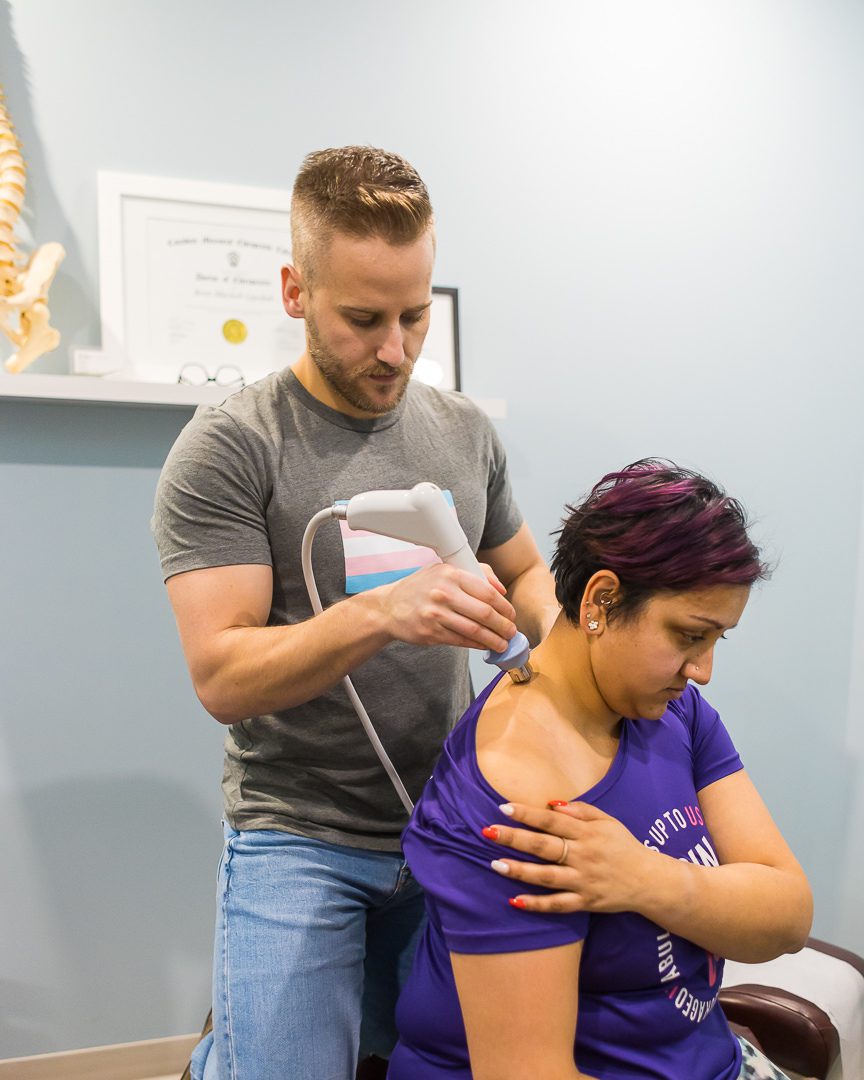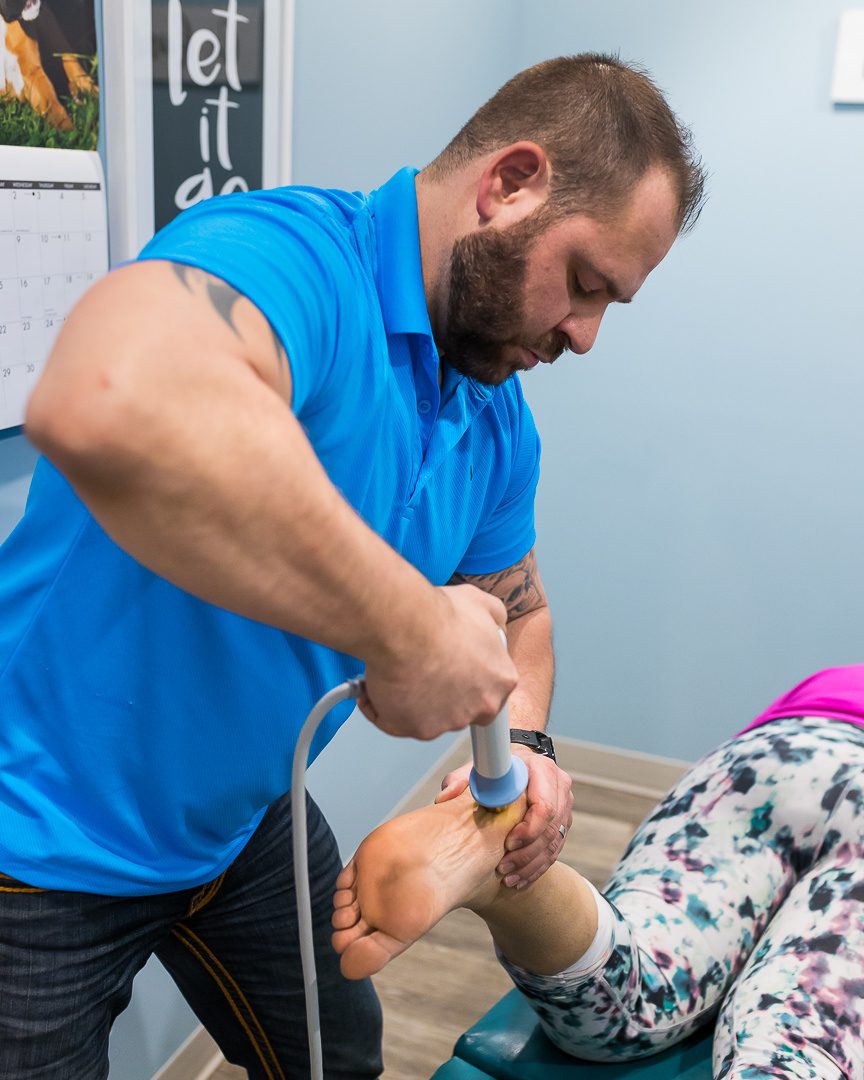Plantar Fasciitis: It’s a Pain in the Foot
Ouch! That hot, zinging, or throbbing pain in your foot hits again! If you’ve been sitting for a while or just gotten out of bed, you’re likely wondering how your feet can be sore already! If you’ve heard the term Plantar Fasciitis before, then you just know.
What is Plantar Fasciitis?
Plantar Fasciitis (PF) is an imbalance of the foot that causes uneven tension or pressure across the Plantar Fascia, which is a large triangular shaped line of connective tissue that runs from your heelbone up to the ball of your foot. This stress causes inflammation and even tearing of the Plantar Fascia, which results in a very painful, but highly treatable condition.
Key indicators that you have Plantar Fasciitis are:
- Pain or prickling sensation in the sole of the foot when first standing after resting or sleeping.
- Heat, redness or inflammation in the sole of the foot when standing or walking, especially on the bottom or inside of the heel. This may also occur through the middle of the arch and even the ball of the foot.
- Over time, these symptoms tend to worsen or occur more quickly.
- Certain shoes seem to relieve or worsen the pain.
- Standing or walking on hard surfaces tend to exacerbate the symptoms.
If you think you may have PF, it’s important to understand that you do not have to live in pain. We can help!
So, What Causes Plantar Fasciitis?
Plantar Fasciitis is a product of our modern world, where our foot muscles rarely get exercise to keep the muscles strong, yet they must still hold the weight of our entire bodies for hours at a time! The most common causes include:
- Weak muscle tone or tight muscles in the foot and leg
- Stiff arches, or lack of arches.
- Tight fitting shoes, or shoes with improper support
- Overpronation (foot rolls to the inside while walking)
- Repetitive strain (running, standing)
- Tight calves and tibialis anterior (the shin splint muscle)
A qualified movement specialist will be able to assess your gait and give you a better idea of what may be contributing to your Plantar Fasciitis symptoms.
Please, Just Tell Me How to Cure Plantar Fasciitis!
Now, here’s where it gets interesting. Just like the rest of our bodies, if we stretch and exercise, we begin to get stronger and feel better. Our feet are made up of the exact same things as the rest of us, yet we rarely take the time to keep them in shape. Improving and resolving PF requires ongoing attention to your foot health in three main areas:
Strengthen and Better Control of Foot Muscles
Strengthening is recommended to prevent tears and increase control of the foot. It is best to do first thing in the morning, after a period of sitting, or before standing or exercising for any length of time. Here are some stretches before you start your strengthening:
Rolling: Gently and slowly roll the arches of the foot over a tennis or lacrosse ball. Even better, put a water bottle in the freezer to make an ice roller.
Toe Extensions: Using hands or a towel, lightly pull toes back toward you until you feel a stretch. This can also be done by standing with toes facing up a wall and leaning forward slightly.
Toe-Handshake: This is exactly what is sounds like. Intertwine toes and fingers in a handshake, then use your hand to twist and roll the foot to soften and stretch arches in all directions.
Next, these exercises are easy to do anywhere, including under your desk! Strengthening the musculature of the foot will result in prolonged relief from PF, but it can come back again if you stop!
Toe Curls: Place a lightly rolled towel or a pen on the floor, and curl your toes around it. You can even try to pick it up.
Short Foot Exercise: Place your foot flat on the floor, ensuring three points of contact at the heel and the ball of the foot closest to the big and baby toes (think tripod). Now using only the muscles of the foot, imagine sliding your toes and heels closer together along the floor.
Heel Raises: If you do not have tight calves or shin splints, stand on the floor or a stair and slightly raise and lower the heels from the floor 1-2 inches.
Support
In between exercise and stretching, it is important to relieve the strain on the Plantar Fascia to avoid additional tearing or inflammation. This is where having the appropriate foot support is important.
Shoes: When we think of the foot, we usually count one arch, but in fact the foot has three, and one of those actually is structured differently at each end! Most shoes support, one, or maybe two of these arches, so it is important to look for a shoe that will give you the best support and sole flexibility for your foot, which is different for everyone.
Orthotics: Orthotics are a device that sits in your shoe and holds your foot in a certain position. Orthotics can reduce or eliminate PF symptoms while they are worn, and can be a great addition to regular exercise and stretching for full resolution of Plantar Fasciitis.
We are always happy to provide additional stretches and exercises, or provide more information about foot support and alignment.
Please ask us about Plantar Fasciitis. We are committed to helping you live pain free, and getting you back to motion!











